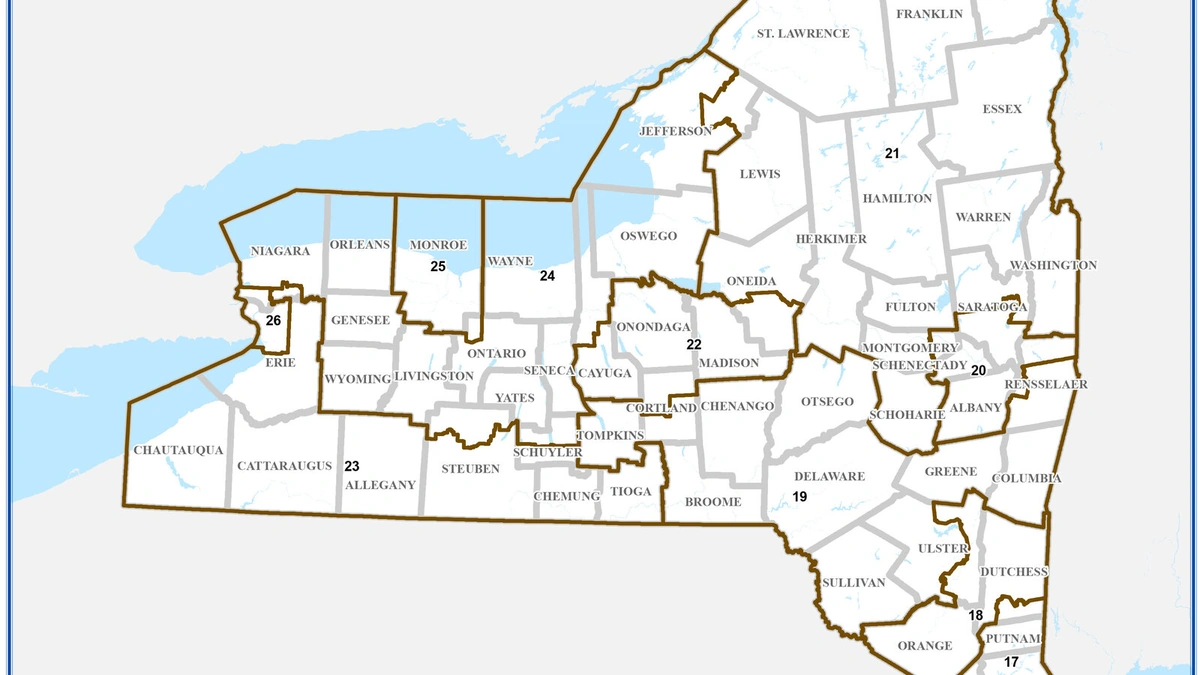Here’s the thing: when you hear about a congressional map being redrawn, especially with a name like Trump attached, it’s easy to glaze over. Just another political squabble, right? Wrong. This isn’t just about lines on a map; it’s about power, representation, and the very fabric of democracy. And in a place as politically charged as North Carolina, well, things are about to get interesting.
The “Why Now?” of the Redraw

So, why is the North Carolina GOP suddenly so keen on redrawing the congressional map ? The short answer: pressure from former President Trump. But the longer, more fascinating answer involves a complex interplay of legal challenges, shifting demographics, and, let’s be honest, good old-fashioned political maneuvering. Redistricting , the process of redrawing these maps, happens every ten years after the census. It’s meant to reflect population changes, ensuring fair representation. But it’s also a prime opportunity for parties to try and gain an advantage.
And here’s where it gets really interesting. The current map was drawn by the courts after challenges to the previous GOP-drawn map. So why mess with something that’s already court-approved? Because Republicans believe they can create a map that gives them an even bigger advantage, potentially flipping seats in the House of Representatives. It’s a high-stakes game of political chess.
Gerrymandering | The Art of Political Cartography
Let’s talk about gerrymandering . It’s a term you’ve probably heard, but what does it actually mean? Simply put, it’s the practice of drawing congressional district lines to favor one political party over another. Think of it as drawing shapes with the specific goal of including or excluding certain voters. It’s named after Elbridge Gerry, an early 19th-century Massachusetts governor who signed a bill that created a district in the shape of a salamander – or, as critics said, a “Gerry-mander.”
What fascinates me is how blatant it can be. Districts that snake and wind in bizarre ways, all in the name of packing voters of one party into a single district or cracking them across multiple districts to dilute their voting power. The impact? Elections become less competitive, and the voices of certain communities are marginalized. The redrawing of the congressional map will decide the voters that will be included in each congressional district .
The Impact on North Carolina Voters
But who really gets hurt by all this political wrangling? It’s not the politicians; it’s the voters. When districts are gerrymandered, it reduces the incentive for elected officials to listen to the concerns of all their constituents. Instead, they can focus on appealing to a smaller, more partisan base. This is an internal link to political maneuvering.
And it’s not just about which party wins. It’s about whether voters feel like their voices matter. When people feel like the system is rigged against them, they become disengaged. Voter turnout drops, and cynicism rises. That’s not good for democracy, no matter which side you’re on.
What Happens Next? The Road Ahead
So, what’s the timeline here? The North Carolina GOP will likely move quickly to redraw the congressional map . Expect legal challenges, protests, and a lot of heated debate. The courts will likely be involved again, and the final map could look very different from what the GOP initially proposes. Here is another internal link to the previous administration’s influence.
What I find most interesting is the potential for this to become a national issue. With control of Congress hanging in the balance, both parties are watching North Carolina closely. The outcome here could have major implications for the 2024 elections and beyond.
Looking Beyond the Immediate Headlines
Here’s where things get really interesting for us in India. While this specific congressional map fight is happening in the US, the underlying principles – fair representation, the power of demographics, and the dangers of political manipulation – are universal. We see similar battles play out in India, whether it’s about delimitation of constituencies or the influence of identity politics. Understanding what’s happening in North Carolina gives us a clearer lens to examine our own political landscape.
Moreover, the tactics used – gerrymandering, strategic voter targeting, and leveraging legal loopholes – are tools that can be, and often are, deployed anywhere in the world. By understanding the playbook, we can be more vigilant about protecting the integrity of our own democratic processes. This isn’t just an American story; it’s a cautionary tale for democracies everywhere.
The redrawing of a congressional map in North Carolina might seem like a distant event. But it’s a reminder that democracy is not a spectator sport. It requires constant vigilance, active participation, and a willingness to challenge those who seek to manipulate the system for their own gain. Let’s be honest: It’s exhausting, but it’s also the price of freedom. North Carolina’s redistricting process may result in significant changes. The new map will certainly affect the existing congressional district boundaries. Voters in the area should be aware that the upcoming congressional elections will be impacted by the new map. The impact of redistricting on representation will play out in the 2024 elections.
FAQ
Why does the congressional map need to be redrawn?
The congressional map is redrawn every ten years following the census to reflect population changes and ensure fair representation.
What is gerrymandering?
Gerrymandering is the practice of drawing congressional district lines to favor one political party over another.
How does redrawing the congressional map affect voters?
It can impact the competitiveness of elections and the extent to which elected officials represent the interests of all their constituents.
What are the implications for the 2024 elections?
The outcome in North Carolina could have major implications for control of Congress and the direction of national politics.




